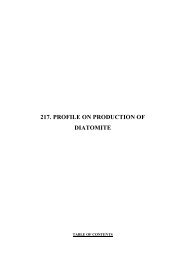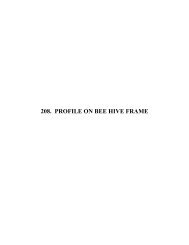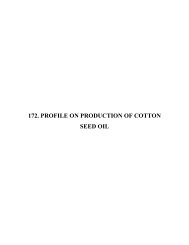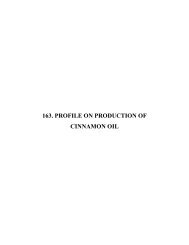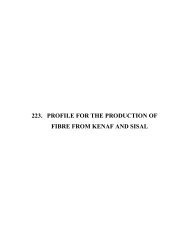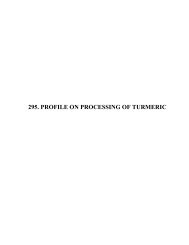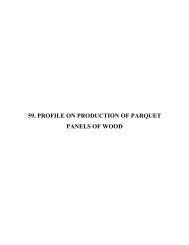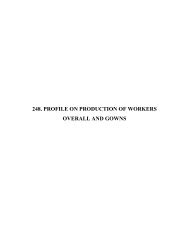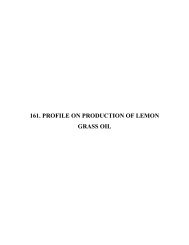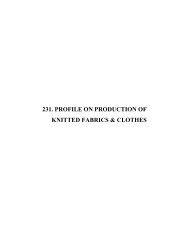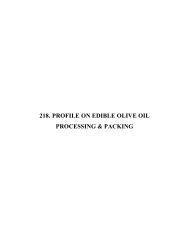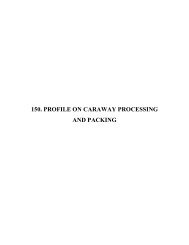guide 2000 English.pub - SNNPR Investment Expansion Process
guide 2000 English.pub - SNNPR Investment Expansion Process
guide 2000 English.pub - SNNPR Investment Expansion Process
Create successful ePaper yourself
Turn your PDF publications into a flip-book with our unique Google optimized e-Paper software.
10varies, from a maximum of 1020.4 persons per km 2 in Wenago Wereda (Gedeo zone) to 3.9 persons per km 2 inSelamago woreda (of Debub Omo).Ethnic compositionThe <strong>SNNPR</strong> is inhabited by 56 different indigenous ethnic groups, which constitutes about 52 percent of the country’stotal.URBANIZATIONThere are 136 towns in the region. Of which, 22 towns are identified as autonomous provisional city administrations and114 towns having a municipality status. The degree of urbanization in the region varies from zone to zone where GamoGofa & Sheka Zone has the highest percentage of urban population with 12-16 % while Dawro Zone, Konso & Amarospecial woreda have the lowest with 2-4% urban population.Urban centers are concentrated in the northeast and central part of the region and many of them spatially found alongthe major roads.AGRICULTUREFOOD CROP PRODUCTIONAgriculture is the mainstay of the economy of the <strong>SNNPR</strong>S. It provides employment for about 90% of the populationand accounts for about 68% of the region’s gross domestic product. Attributable to the great extent diversified agro –ecology, climate, soil type and cultural practice of the people in crop production, the region is the home of varieties offood crops. Wheat, Barely, Teff, Sorghum, pulses, Enset and other root crops are the major food crop grown in<strong>SNNPR</strong>. Coffee is the main export agricultural produce; Tea, Chat and tobacco are also main cash crops.Regularly Gamogofa, Sidama, Gurage, Hadiaya, Kaffa, Silti and Kembata Tembaro are the highest food crop producerswhile the low-lying pastoral zone of Debub Omo and the coffee dominated zone of Gedeo are of the low producers.According to the regional statistical abstract in the year 2005/6 a total of about 24.4 million tones of food crops isproduced in the region. It is to be noted that the amount doesn’t include the production size of crop like, Enset, fruit andvegetables.COFFEE PRODUCTION AND MARKETCoffee the source of wealth in foreign exchange earning of the country is widely grown in the region. About 248479 haof land is estimated to be covered with coffee plantation. (As of 2007) According to the regional Bureau of Agriculture,51% of the total Woredas of the region are coffee produces with different level of production. The highest share ofcoffee sent to the central market is by Sidama, Gedeo, Shaka, Kaffa and Bench Maji zones. Both washed and washedcoffee has been delivered to the central market for several years, and it is estimated that 38-40% of the country’s exportis believed to be collected from the region.In 2007, a total of 67899.02 tones of clean coffee is delivered to the central market, of the total 56.4% is MAY washed 2008 &43.6% is unwashed clean coffee.AWASSA



